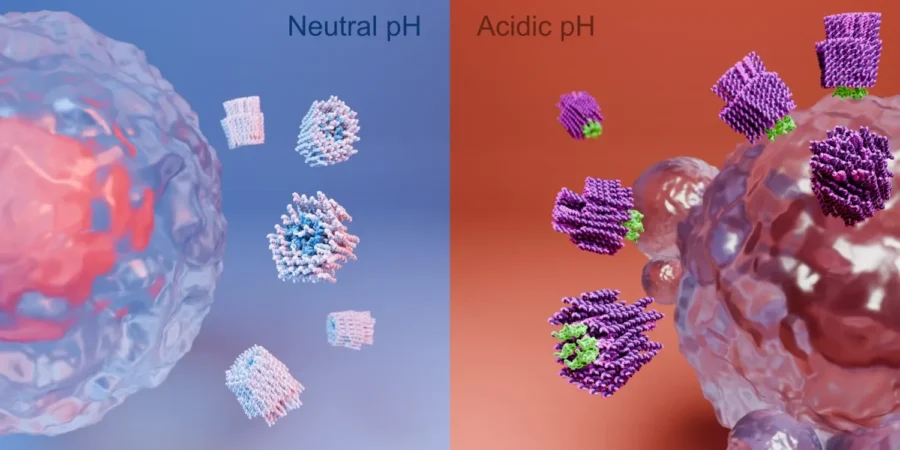Swedish researchers have engineered microscopic robots that can selectively kill cancer cells while leaving healthy tissue unharmed. The innovative nanorobots, developed at Karolinska Institutet, showed promising results in reducing tumor growth in mice with breast cancer.
The tiny machines carry a hidden weapon that only activates in the acidic environment surrounding cancer cells. This targeted approach could lead to more effective and less toxic cancer treatments in the future.
A Concealed Lethal Weapon
The nanorobot’s killing mechanism is based on a hexagonal pattern of peptides that can trigger cell death when it interacts with cell surfaces. However, this weapon is too potent to use indiscriminately.
“This hexagonal nanopattern of peptides becomes a lethal weapon,” explains Professor Björn Högberg, who led the study. “If you were to administer it as a drug, it would indiscriminately start killing cells in the body, which would not be good. To get around this problem, we have hidden the weapon inside a nanostructure built from DNA.”
The team used a technique called DNA origami to construct the nanorobot’s protective shell. This method allows scientists to fold DNA strands into precise 3D shapes at the nanoscale.
Activating the ‘Kill Switch’
The nanorobot’s weapon remains concealed until it encounters the acidic environment typical of cancer cells. In laboratory tests, the peptide weapon stayed hidden at normal body pH (7.4) but became highly effective at killing cells when the pH dropped to 6.5.
“We have managed to hide the weapon in such a way that it can only be exposed in the environment found in and around a solid tumour,” Högberg says. “This means that we have created a type of nanorobot that can specifically target and kill cancer cells.”
When injected into mice with breast cancer tumors, the nanorobots reduced tumor growth by 70% compared to control mice given an inactive version.
The researchers are now planning to test their invention in more advanced cancer models that better mimic human disease. They also need to investigate potential side effects before human trials can begin.
“We now need to investigate whether this works in more advanced cancer models that more closely resemble the real human disease,” says Yang Wang, the study’s lead author. “We also need to find out what side effects the method has before it can be tested on humans.”
The team is also exploring ways to make the nanorobots even more targeted by adding proteins or peptides to their surface that could bind specifically to certain types of cancer cells.
This groundbreaking research, published in Nature Nanotechnology, was funded by several organizations including the Knut and Alice Wallenberg Foundation and the European Research Council. The invention is in the process of being patented, highlighting its potential for future clinical applications.
While still in early stages, this innovative approach to cancer treatment demonstrates the power of combining nanotechnology with our understanding of cancer biology. If successful in further trials, these stealthy nanorobots could offer a powerful new weapon in the fight against cancer.
If our reporting has informed or inspired you, please consider making a donation. Every contribution, no matter the size, empowers us to continue delivering accurate, engaging, and trustworthy science and medical news. Independent journalism requires time, effort, and resources—your support ensures we can keep uncovering the stories that matter most to you.
Join us in making knowledge accessible and impactful. Thank you for standing with us!

